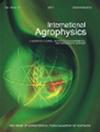Effects of land uses and soil types on microbial activity and community structure
IF 2
4区 农林科学
Q2 AGRONOMY
引用次数: 1
Abstract
. This study was conducted in order to understand the effects of land use and soil types on microbial activity and community structure. Soil samples were collected from four different soil types (Solonetz, Solonchak, Chernozem and Gleysol) being used under different land use practices (arable, pasture and meadow). The soil chemical properties, moisture content, microbiological activity and community size were investigated. The principal component analysis results showed that differ - ent land uses and soil types are clearly separated based on the chemical properties of the soil. The canonical correspondence analysis results revealed that more than 78% of variation in the microbiological properties of the samples could be explained by environmental factors. Significant biological differences were observed among the different land use practices and soil types, and also soil cultivation affected the different groups of soil microbes. Sampling sites were separated into two main clusters (Bray-Curtis) based on certain microbiological properties, salt-affected and non-salt-affected soils. The soil types were the main driving factor, with high soil taxonomic distances, however, low taxonomic distances indicated that land use had more pronounced effects on soil microbiological properties.土地利用和土壤类型对微生物活性和群落结构的影响
本研究旨在了解土地利用和土壤类型对微生物活性和群落结构的影响。从四种不同的土壤类型(Solonetz、Solonchak、Chernozem和Gleysol)收集土壤样本,这些土壤类型在不同的土地利用实践(耕地、牧场和草地)下使用。研究了土壤化学性质、水分含量、微生物活性和群落规模。主成分分析结果表明,不同的土地利用和土壤类型根据土壤的化学性质而明显分离。典型对应分析结果表明,样品微生物特性的78%以上的变化可以由环境因素解释。不同土地利用方式和土壤类型之间存在显著的生物学差异,土壤耕作对不同土壤微生物群也有影响。根据某些微生物特性,将采样点分为两大类(Bray-Curtis),即受盐影响的土壤和非受盐影响土壤。土壤类型是主要驱动因素,土壤分类距离高,但分类距离低表明土地利用对土壤微生物特性的影响更显著。
本文章由计算机程序翻译,如有差异,请以英文原文为准。
求助全文
约1分钟内获得全文
求助全文
来源期刊

International Agrophysics
农林科学-农艺学
CiteScore
3.60
自引率
9.10%
发文量
27
审稿时长
3 months
期刊介绍:
The journal is focused on the soil-plant-atmosphere system. The journal publishes original research and review papers on any subject regarding soil, plant and atmosphere and the interface in between. Manuscripts on postharvest processing and quality of crops are also welcomed.
Particularly the journal is focused on the following areas:
implications of agricultural land use, soil management and climate change on production of biomass and renewable energy, soil structure, cycling of carbon, water, heat and nutrients, biota, greenhouse gases and environment,
soil-plant-atmosphere continuum and ways of its regulation to increase efficiency of water, energy and chemicals in agriculture,
postharvest management and processing of agricultural and horticultural products in relation to food quality and safety,
mathematical modeling of physical processes affecting environment quality, plant production and postharvest processing,
advances in sensors and communication devices to measure and collect information about physical conditions in agricultural and natural environments.
Papers accepted in the International Agrophysics should reveal substantial novelty and include thoughtful physical, biological and chemical interpretation and accurate description of the methods used.
All manuscripts are initially checked on topic suitability and linguistic quality.
 求助内容:
求助内容: 应助结果提醒方式:
应助结果提醒方式:


